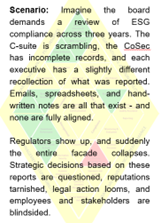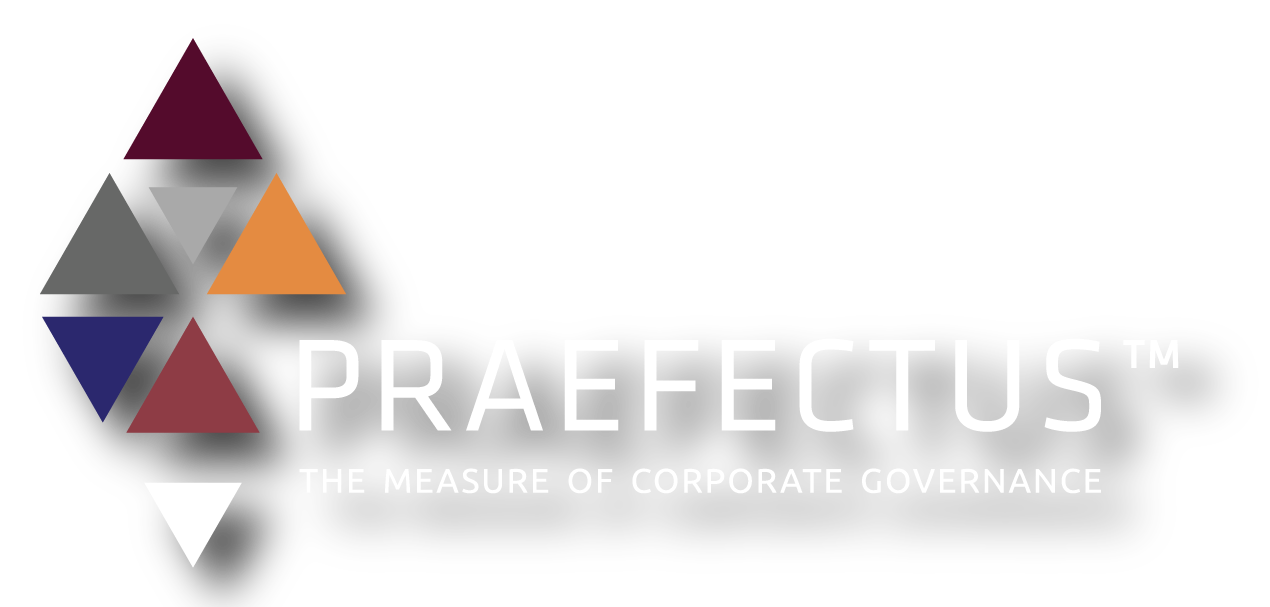Like Capone’s tax files, flawed governance evidence always surfaces
For centuries, corporates have relentlessly pursued profit as the primary purpose of business. But sadly, this has often been at the expense of ethics. In recent decades, governance codes and international standards -- championed by governance specialists and regulators -- have promised a course correction through ethical leadership, compliance, and transparency. Yet, for many organisations, these promises remain aspirational and the ideals stay unfulfilled.
The reality is stark: those in power often exploit loopholes in governance requirements, creating an environment where misreporting is routine and ethical compliance becomes little more than a polished facade. Cases such as Enron (2001 - debt hidden through off-balance sheet entities) and Steinhoff (2017 - inflated assets and profits) remind us of just how far some executives will go in the pursuit of personal gain. It starts with small deceptions, but over time, these leaders start to believe their own fabrications, losing track of what’s true, exaggerated, or outright manipulated to ensure targets are achieved.
The consequences? Boards are misled, decisions are flawed, strategic objectives are missed, and stakeholders remain none the wiser.
The governance divide: With or without digitisation
The divide between organisations that digitise their governance framework and those that do not is widening. In a digitised environment, governance activities are captured and managed in real time, giving boards, auditors, and others charged with governance immediate access to verifiable evidence. Decisions are based on accurate, up-to-date insights, and the opportunity for misreporting, whether deliberate or accidental, is significantly reduced.
A Digitised Governance Framework (DGF) shifts governance from static checklists into a living system of accountability. Governance anomalies are identified promptly with RAG flags (red, amber, green) and performance measurement ranking, ensuring these issues are subject to further assurance, and that directors can drill down from high-level dashboards into the supporting evidence. This enhanced transparency turns governance from a backward-looking audit to a forward-looking safeguard. Burying inconvenient truths becomes far more difficult as every action leaves a traceable digital footprint.
By contrast, organisations without digitisation remain trapped in manual processes, scattered spreadsheets, and the fading recollections of executives. Misreporting becomes all too easy, whether to mask failures, secure bonuses, or simply to avoid board scrutiny. Furthermore, when auditors or regulators request cross-sectional evidence, compiling it can take months, and comes at an enormous cost. As time passes, memories can fade and errors can multiply, making it nearly impossible to separate fact from fiction.
The Company Secretary: Keeper of secrets or Keeper of risk?
The Company Secretary is meant to be the custodian of an organisation’s compliance truth. But without structured, digitised systems, that role can quickly turn from protector to scapegoat. In governance failures such as Carillion (2018 - UK construction giant collapse) and Satyam (2009 - India’s “Enron”), company secretarial staff were accused of failing to challenge or expose flawed reporting.
Weak, fragmented, and poorly audited systems don’t just undermine governance - they set the Company Secretary up for failure. When regulators arrive, the Company Secretary is left defending the indefensible. Cases like Olympus (2011 - $1.7bn losses concealed by the executives) and Enron (2001 - governance staff complicit in complex debt-hiding structures) show how governance officers can be entangled in cover-ups. At that point, the risk of personal liability escalates, reputational damage deepens, and the organisation’s credibility collapses piece by piece.
What secrets are really being preserved? Can any Company Secretary credibly defend incomplete records, misleading reports, or flawed governance practices when the spotlight turns on them?
The new risk realities

Risks today come from every direction: external shocks, internal gaps, and missing or delayed governance data. The greatest danger is what boards don’t know. When boards operate in the dark, every gap becomes a risk - from decisions and compliance to finances, reputation, and internal stakeholder trust. PwC’s 2023 Global CEO Survey reinforces this urgency: 40% of CEOs believe their companies will not remain viable in 10 years without fundamental transformation. Without digitised governance, business transformation is built on sand. There are numerous real-life examples where these blind spots have proven catastrophic. Volkswagen’s Dieselgate scandal in 2015 showed how manipulated emissions data can undermine strategy and trust. Wirecard’s 2020 collapse revealed how fictitious funds without robust audit trails can obscure compliance and inflate performance. Reputations have also been destroyed when polished narratives unravel, as seen with Boeing’s 737 Max safety failures (2019) and Steinhoff’s accounting scandal (2017). These cases show how the absence of credible, timely information erodes trust, delays responses and leaves boards exposed.
External pressures: Fear beyond the boardroom
The external pressures only compound the internal risks. Global investors such as BlackRock continue to demand stronger ESG oversight and are increasingly scrutinising digital and AI-related competencies at board level. Regulators are tightening evidence-based expectations through SEC mandates and EU ESG directives. At the same time, disruption is accelerating faster than most boards can adapt, and the weakest link -- cultural, ethical, financial, or digital -- will always surface under strain.
In this climate, digitised oversight is no longer optional. It has become the minimum threshold for credibility with investors, regulators, and society.
Turning fear into action
The solution is clear. Organisations must move from reactive compliance to proactive, evidence-backed governance. DGFs do not just track activity; they can enforce accountability, ensure real-time accuracy, and protect boards and executives -- including the Company Secretary -- from misreporting and scrutiny. With a DGF, governance anomalies are flagged in real time, turning potential crises into proactive fixes. Evidence trails are automatically logged and validated through assurance functions and directors can interrogate the data directly from their dashboards.
Critics often point to cost and complexity as barriers to digitisation. While setup requires investment, the savings from avoided audit overruns, regulatory fines, and reputational damage far outweigh the cost. In the modern regulatory and stakeholder landscape, governance without evidence is a liability. Failing to digitise is, paradoxically, the most expensive choice of all. Crucially, DGFs don’t only mitigate risks; they unlock smarter, faster, and more confident decision-making. Boards no longer operate in fear of hidden gaps, they act with clarity, agility, and trust in their data.
And here’s the Al Capone lesson: No matter how long unethical behaviour persists, gaps -- even small ones -- will eventually be exposed. Capone evaded justice for years, but in the end, it was his own tax records that brought him down. Like Capone’s books, your governance records must be ironclad. Without credible evidence, the fallout is inevitable.
ENDS
Words: 1,099
For further information contact:
Terrance M. Booysen (CGF: Chief Executive Officer) - Cell: +27 (0)82 373 2249 / E-mail: [email protected]
Jené Palmer (CGF: Director)) - Cell: +27 (0)82 903 6757 / E-mail: [email protected]
CGF Research Institute (Pty) Ltd - Tel: +27 (0)11 476 8261 / Web: www.cgfresearch.co.za
Follow CGF on X: @CGFResearch
Click below to read more...

